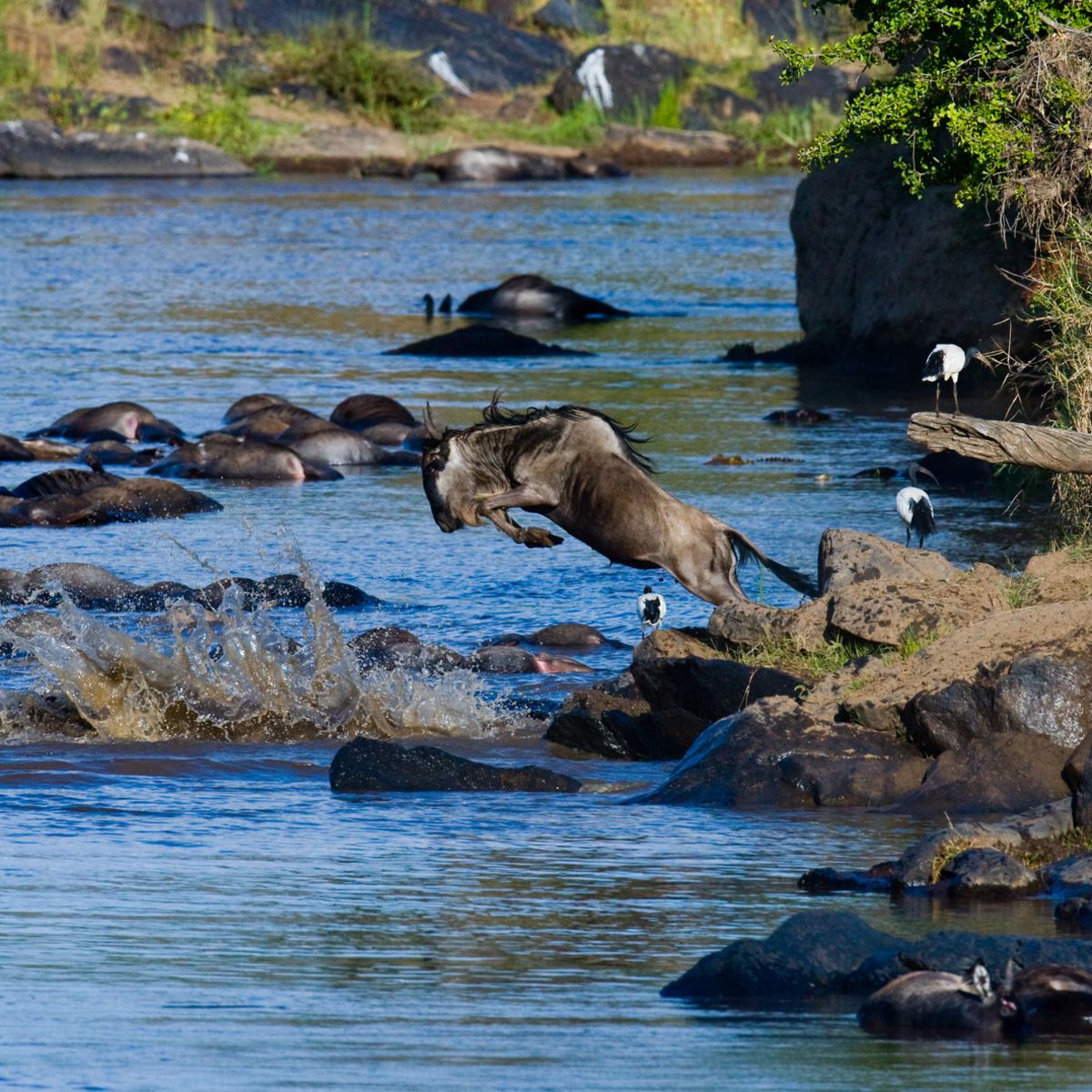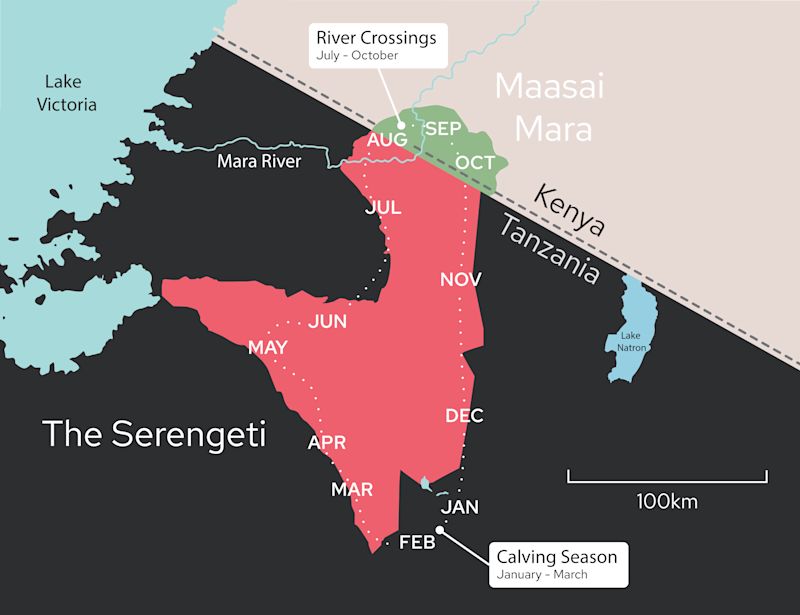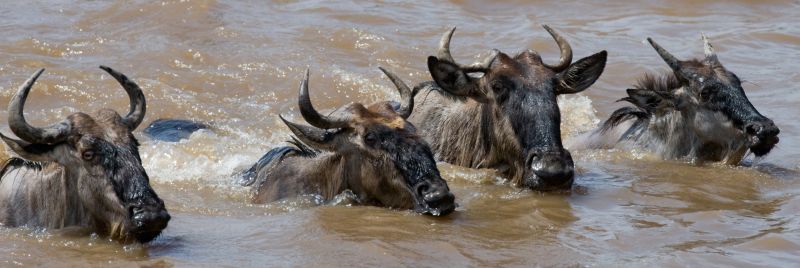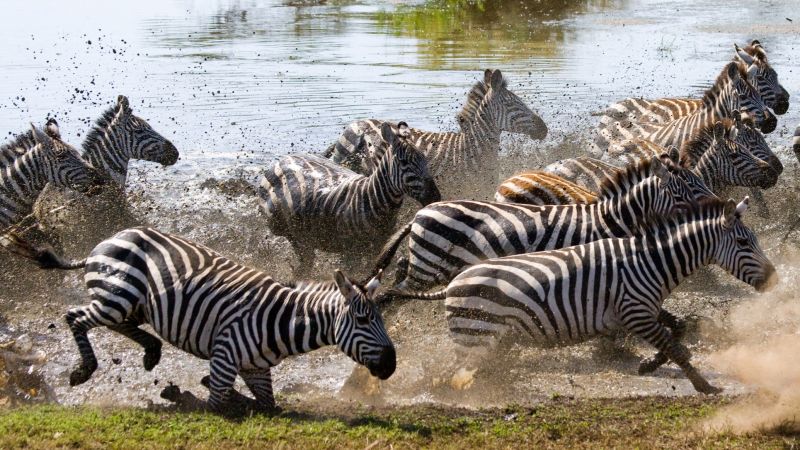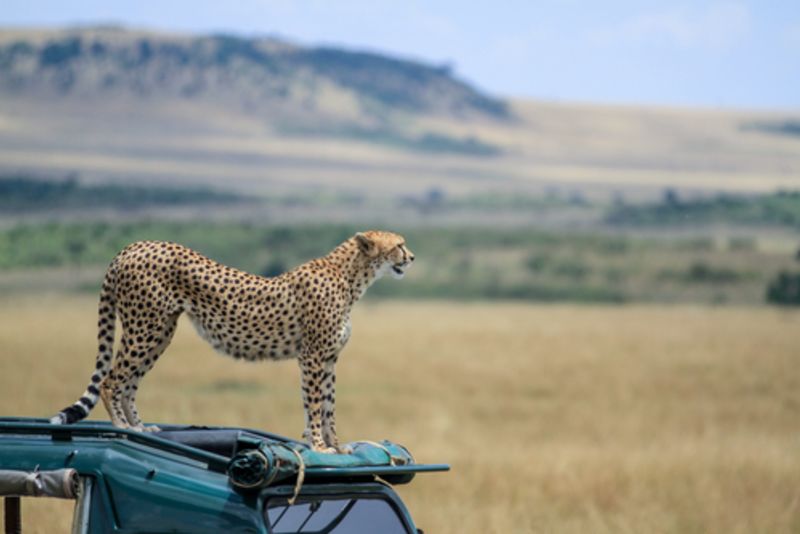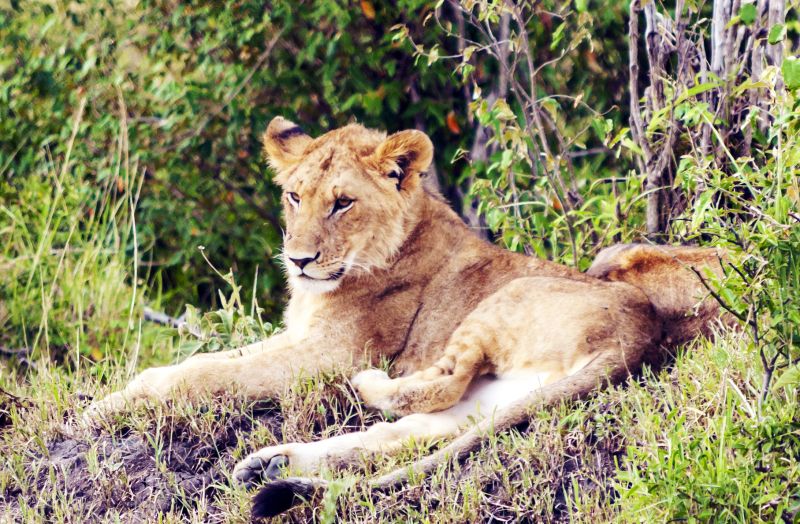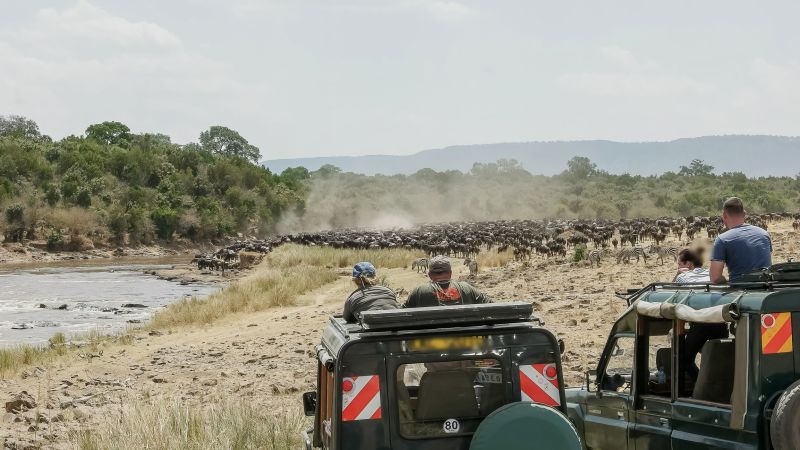When is the Great Migration in Maasai Mara?
Every year around July the roughly 1.5 million hoofed animals of the Great Wildlife Migration, guided by the scent of moisture, start leaving the drying plains of Tanzania's Serengeti National Park and enter Kenya's Maasai Mara National Reserve to the north.
In following their instincts, these hungry animals – primarily wildebeests but also zebras and gazelles – must cross some treacherous, crocodile-infested waters like the Mara River. These frenetic moments are natural spectacles unlike anything else on the planet!
Wildebeests swimming across the Mara River
After enjoying the sustaining pastures of the Maasai Mara for a few months, and having mated, the herds head back south again between October and November to reach the sweeping Serengeti plains where they will give birth to young in February and then begin the whole migratory cycle all over again.
The Maasai Mara offers greener pasture than the Serengeti during the long dry season
Those wanting to see the Great Migration herds in the Maasai Mara must therefore visit between July and November.
Yet the migration is not attached to a Swiss clock; the herds move into Kenya following good rains, and the timing of the rains varies year on year.
Further to this, it's been widely reported that the Great Migration herds are dwindling in number and spending less time in Kenya than they did say 60 years ago.
So for a proper guarantee of seeing the herds we recommend visiting the Maasai Mara sometime between August and early October.
We recommend visiting Maasai Mara National Reserve between August and October for a fairly certain Great Migration experience.
Wildebeests (or gnus) are ungainly-looking creatures
When is the best time for seeing animals in general?
The Maasai Mara has an incredible roster of animals large and small. It's also one of the relatively few parks in Africa hosting all of the Big Five (lions, leopards, bush elephants, Cape buffaloes and black rhinos). In fact, it's one of Africa's top 5 parks for spotting lions.
Fortunately for visitors who are all about the animals, the Maasai Mara's Great Migration herds are present during the long dry season, which is the same time period offering the best all-round animal viewing in the reserve.
The long dry season is the only time you can see the Great Migration herds in the Maasai Mara, but happily that's also the ideal period for seeing as many as possible of the park's other animals!
The reason for the dry season being the best period for wildlife spotting is that the vegetation thins out at this time, making it easier to spot animals. (Remember that it's in the best interests of many species to stay hidden much of the time! In the wet seasons, many animals can hide behind the shields of long grass and thick leaves.)
The dry season also forces many animals to congregate around watering holes. This makes it easier to know where to head within the vast Maasai Mara Reserve for the best chances of animal sightings.
Animals of different species often mingle at watering holes
There are two dry seasons in the Maasai Mara:
- The long dry season (July to October).
- The short dry season (mid December to March).
The short dry season is also a good time for spotting wildlife in general. But you won't see the Great Migration if you come at this time.
You will, however, enjoy a less crowded reserve during the short dry season (as the Great Migration ensures the long dry season is always the reserve's 'peakiest' peak season).
Predator sightings also increase during the reserve's Great Migration months
Finally, we should point out that many predators – including lions, leopards and hyenas – follow the Great Migration herds. This means the Maasai Mara's predator population can swell a little during the residency of the migration herds.
Visitors to the reserve at this time therefore enjoy a greater chance of seeing a hunt take place. If you're keen to witness a kill, keep an eye on stragglers and young on the fringes of the migration herds.
Is the Great Migration peak season in Maasai Mara?
Yes, the Maasai Mara's peak season is very much the long dry season, which is when the Great Migration herds are present.
This is understandable, as most folks travelling from outside of Africa can only afford to head to Kenya once in their lives, and so they want to time things to see this renowned phenomenon!
So please understand that if you visit Maasai Mara between July and October, you'll be inside one safari vehicle among many.
Does the prospect of other safari vehicles really bother you?
If you really hate crowds but have a bit of an appetite for risk, we suggest that you chance visiting the Maasai Mara during the shoulder season of late October to November. At this time the park's visitors start to dwindle, yet there's still a chance that you'll see the Great Migration herds!
Is the Great Migration really worth the effort?
Everyone who has ever witnessed the Great Migration will tell you the same thing: photos don't do it justice.
You have to be there yourself to begin to truly understand the enormity of the herds – to see how they sprawl seemingly endlessly across the landscape. You simply cannot encapsulate this phenomenon in a photograph, or even a video.
It's only by driving through the herds for hours, or taking a hot air balloon ride over the landscape, that you understand why the Great Migration is regarded by many as the greatest wildlife spectacle on Earth!
A hot air balloon ride offers another great vantage point for appreciating the scale of the Great Migration
If you're interested in learning more about the Great Migration, please read 7 truly stupendous facts about the Great Migration.
